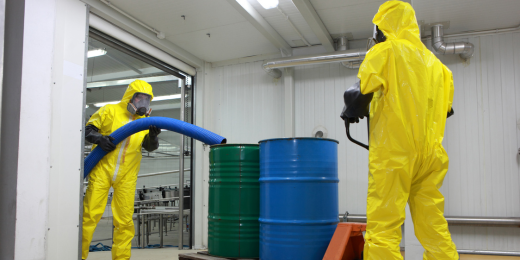The Basic Principles Of Reclaim Waste
The Basic Principles Of Reclaim Waste
Blog Article
Top Guidelines Of Reclaim Waste
Table of ContentsNot known Facts About Reclaim WasteGetting The Reclaim Waste To WorkWhat Does Reclaim Waste Do?Indicators on Reclaim Waste You Should KnowNot known Details About Reclaim Waste
Explore the types, incidents, and types of fluid waste. Domestic sewer waste refers to the waste and items from a residential septic tank. This kind of waste is produced by humans in homes, colleges, and various other structures. This only includes septic containers that have a drain area. The correct management and disposal of domestic sewer waste need liquid waste to be transferred to a sewer therapy plant where the proper approaches and tools are put on cleanse and take care of waste.
Business waste frequently consists of possible dangers, such as flammable products or a mixture of liquid and strong waste items, and requires a much more innovative and in-depth disposal procedure. The disposal of business waste usually entails the filtering of waste prior to transport to make sure secure and correct disposal. Hazardous waste is developed from byproducts and overflow of industrial processes and production.
This kind of waste can not use the very same sewer monitoring transportation or processes as septic or industrial liquids. The hazardous waste management procedure requires the examination and testing of liquid waste before it undergoes the disposal procedure (liquid waste removal melbourne). Runoff waste is the liquid waste that originates from overflow and excess stormwater in extremely populated locations or cities
Runoff waste can cause contamination and flooding if not handled appropriately. Making sure appropriate waste monitoring can protect against calamities and decrease environmental injury.
Things about Reclaim Waste
Contact PROS Solutions today to discover our waste management and disposal solutions and the correct methods to look after the fluid waste you generate.
(https://www.domestika.org/en/reclaimwaste1)Do you understand what takes place to your water when you disengage, flush the commode or drain pipes the washing device? No? Well, it's worth understanding. This so-called 'wastewater' is not only an important source yet, after therapy, will be released to our land, waterways or the ocean. Used water from commodes, showers, baths, kitchen sinks, laundries and commercial processes is referred to as wastewater.

water made use of to cool equipment or tidy plant and devices). Stormwater, a form of wastewater, is overflow that moves from agricultural and city areas such as roof company website coverings, parks, yards, roads, courses and gutters into stormwater drains pipes, after rainfall. Stormwater flows neglected straight to neighborhood creeks or rivers, at some point reaching the ocean.
Indicators on Reclaim Waste You Should Know
In Queensland, the majority of wastewater is treated at sewer therapy plants. Wastewater is transferred from domestic or industrial sites through a system of sewers and pump stations, referred to as sewage reticulation, to a sewer treatment plant. Regional federal governments develop, maintain and operate most sewage therapy plants. Operators are certified under the Environmental Management Act 1994 to release cured wastewater at an acceptable environmental requirement into waterways.
The Department of Natural Resources recommends city governments about handling, operating and keeping sewerage systems and therapy plants. In unsewered areas, city governments might call for homeowners to install specific or house sewer treatment systems to deal with residential wastewater from commodes, cooking areas, bathrooms and washings. The Division of Natural Resources authorises the usage of home systems when they are shown to be effective.
The majority of stormwater gets no therapy. In some new communities, treatment of some stormwater to remove clutter, sand and crushed rock has actually begun using gross contaminant traps. Wastewater therapy happens in 4 phases: Eliminates strong matter. Bigger solids, such as plastics and various other things wrongly discharged to drains, are removed when wastewater is passed via screens.
Wastewater then flows into huge containers where solids settle and are eliminated as sludge. Oil and scum are skimmed from the surface. Makes use of small living microorganisms referred to as micro-organisms to break down and get rid of remaining dissolved wastes and fine fragments. Micro-organisms and wastes are included in the sludge. Removes nitrogen and phosphorus nutrients that might create algal flowers in our rivers and endanger marine life.
A Biased View of Reclaim Waste
Nutrient removal is not readily available at all sewer therapy plants because it requires costly specialised equipment. Clear liquid effluent created after therapy might still include disease-causing micro-organisms - liquid waste disposal.

This usually suggests wastewater needs to be dealt with or contaminants removed prior to it can be discharged to rivers. A lot of wastewater streams right into the sewerage system. Under the Act, city governments administer approvals and licences for eco appropriate activities (Periods) including wastewater releases that may have a neighborhood influence. The department carries out approvals and permits to Ages including wastewater releases that could have a local or statewide impact.
Some Known Factual Statements About Reclaim Waste
Or else, samples are taken for research laboratory analysis. Commonly many tests are needed to develop the levels of each of the different toxins such as oils, heavy steels and pesticides in water. Surveillance offers valid details regarding water top quality and can verify that permit conditions are being met. The information gotten via tracking provides the basis for making water quality choices.
Report this page